The Sack of Rome on 6 May 1527 was a military event carried out by the mutinous troops of Charles V, Holy Roman Emperor in Rome, then part of the Papal States . It marked a crucial imperial victory in the conflict between Charles and the League of Cognac (1526–1529) — the alliance of France, Milan, Venice, Florence and the Papacy.below sack of rome by lingelbach
. It marked a crucial imperial victory in the conflict between Charles and the League of Cognac (1526–1529) — the alliance of France, Milan, Venice, Florence and the Papacy.below sack of rome by lingelbach
 . It marked a crucial imperial victory in the conflict between Charles and the League of Cognac (1526–1529) — the alliance of France, Milan, Venice, Florence and the Papacy.below sack of rome by lingelbach
. It marked a crucial imperial victory in the conflict between Charles and the League of Cognac (1526–1529) — the alliance of France, Milan, Venice, Florence and the Papacy.below sack of rome by lingelbach
Pope Clement VII had given his support to the Kingdom of France in an attempt to alter the 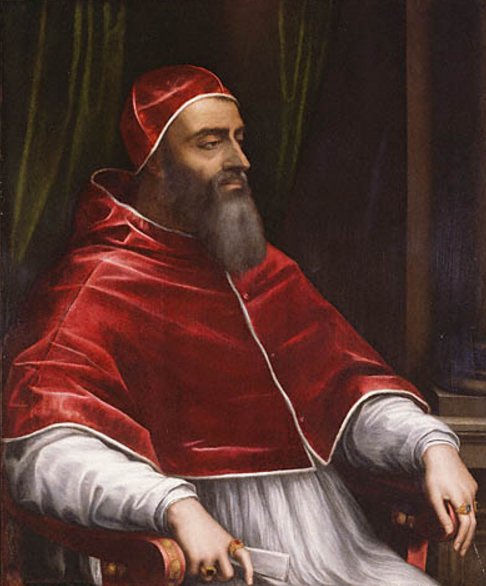 balance of power in the region, and free the Papacy from what many considered to be 'Imperial domination' by the Holy Roman Empire (and the Habsburg dynasty).
balance of power in the region, and free the Papacy from what many considered to be 'Imperial domination' by the Holy Roman Empire (and the Habsburg dynasty).
 balance of power in the region, and free the Papacy from what many considered to be 'Imperial domination' by the Holy Roman Empire (and the Habsburg dynasty).
balance of power in the region, and free the Papacy from what many considered to be 'Imperial domination' by the Holy Roman Empire (and the Habsburg dynasty).The army of the Holy Roman Emperor defeated the French army in Italy, but funds were not available to pay the soldiers. The 34,000 Imperial troops mutinied and forced their commander, Charles III, Duke of Bourbon and Constable of France , to lead them towards Rome.
, to lead them towards Rome. 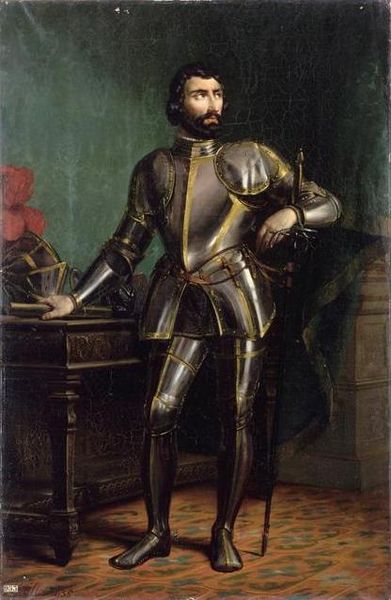 Apart from some 6,000 Spaniards
Apart from some 6,000 Spaniards  under the Duke, the army included some 14,000 Landsknechts under Georg von Frundsberg
under the Duke, the army included some 14,000 Landsknechts under Georg von Frundsberg , some Italian infantry led by Fabrizio MaramaldoAn illiterate native of Naples or Calabria, his exact origins are unknown, though he hailed from the Kingdom of Naples, and was perhaps of Spanish origin. He fled Naples after having murdered his wife and sought protection at the Gonzaga
, some Italian infantry led by Fabrizio MaramaldoAn illiterate native of Naples or Calabria, his exact origins are unknown, though he hailed from the Kingdom of Naples, and was perhaps of Spanish origin. He fled Naples after having murdered his wife and sought protection at the Gonzaga under Federico 11, Duke of Mantova and in the Republic of Venice. In 1526 he was absolved of the crime of uxoricide by Charles V, the Holy Roman Emperor. He fought the Turks in Hungary, and the French in Piedmont. He suffered a grievous setback in the siege he laid to the city of Asti in 1526 where, after having breached the walls by cannonfire for a final assault, legend narrates that victory was snatched from his grasp by the intervention of the town's patron saint, St.Secondus of Astiwho is said to have appeared in the sky. Fighting on the imperial side, he took part in the Sack of Rome the following year, and three years later, in the siege of Florence. He gained a reputation as a ruthless mercenary and ravager., Sciarra Colonna
under Federico 11, Duke of Mantova and in the Republic of Venice. In 1526 he was absolved of the crime of uxoricide by Charles V, the Holy Roman Emperor. He fought the Turks in Hungary, and the French in Piedmont. He suffered a grievous setback in the siege he laid to the city of Asti in 1526 where, after having breached the walls by cannonfire for a final assault, legend narrates that victory was snatched from his grasp by the intervention of the town's patron saint, St.Secondus of Astiwho is said to have appeared in the sky. Fighting on the imperial side, he took part in the Sack of Rome the following year, and three years later, in the siege of Florence. He gained a reputation as a ruthless mercenary and ravager., Sciarra Colonna
 and Luigi Gonzaga, and some cavalry underFerdinando Gonzaga.above colonna hitting the pope
and Luigi Gonzaga, and some cavalry underFerdinando Gonzaga.above colonna hitting the pope
 , to lead them towards Rome.
, to lead them towards Rome.  Apart from some 6,000 Spaniards
Apart from some 6,000 Spaniards  under the Duke, the army included some 14,000 Landsknechts under Georg von Frundsberg
under the Duke, the army included some 14,000 Landsknechts under Georg von Frundsberg , some Italian infantry led by Fabrizio MaramaldoAn illiterate native of Naples or Calabria, his exact origins are unknown, though he hailed from the Kingdom of Naples, and was perhaps of Spanish origin. He fled Naples after having murdered his wife and sought protection at the Gonzaga
, some Italian infantry led by Fabrizio MaramaldoAn illiterate native of Naples or Calabria, his exact origins are unknown, though he hailed from the Kingdom of Naples, and was perhaps of Spanish origin. He fled Naples after having murdered his wife and sought protection at the Gonzaga under Federico 11, Duke of Mantova and in the Republic of Venice. In 1526 he was absolved of the crime of uxoricide by Charles V, the Holy Roman Emperor. He fought the Turks in Hungary, and the French in Piedmont. He suffered a grievous setback in the siege he laid to the city of Asti in 1526 where, after having breached the walls by cannonfire for a final assault, legend narrates that victory was snatched from his grasp by the intervention of the town's patron saint, St.Secondus of Astiwho is said to have appeared in the sky. Fighting on the imperial side, he took part in the Sack of Rome the following year, and three years later, in the siege of Florence. He gained a reputation as a ruthless mercenary and ravager., Sciarra Colonna
under Federico 11, Duke of Mantova and in the Republic of Venice. In 1526 he was absolved of the crime of uxoricide by Charles V, the Holy Roman Emperor. He fought the Turks in Hungary, and the French in Piedmont. He suffered a grievous setback in the siege he laid to the city of Asti in 1526 where, after having breached the walls by cannonfire for a final assault, legend narrates that victory was snatched from his grasp by the intervention of the town's patron saint, St.Secondus of Astiwho is said to have appeared in the sky. Fighting on the imperial side, he took part in the Sack of Rome the following year, and three years later, in the siege of Florence. He gained a reputation as a ruthless mercenary and ravager., Sciarra Colonna
 and Luigi Gonzaga, and some cavalry underFerdinando Gonzaga.above colonna hitting the pope
and Luigi Gonzaga, and some cavalry underFerdinando Gonzaga.above colonna hitting the popeRome was his nemesis.The matter shook the old commander to such an extent that he suffered a stroke. Unable to regain his physical strength, Frundsberg was moved to Germany after a long struggle in Italian hospitals. Tormented by great anxiety over the situation with his mercenaries or “beloved sons”, the loss of his personal estate and death of one of his sons, Frundsberg died in his castle in Mindelheim . He was considered a capable and chivalrous soldier, and a devoted servant of the Habsburgs.
. He was considered a capable and chivalrous soldier, and a devoted servant of the Habsburgs.
 . He was considered a capable and chivalrous soldier, and a devoted servant of the Habsburgs.
. He was considered a capable and chivalrous soldier, and a devoted servant of the Habsburgs.His son Caspar (1500–1536) and his grandson Georg (died 1586) were both soldiers of some distinction. With the latter's death, the family became extinct.
During World War II, the Waffen-SS's 10th Panzer Division was given the honorific title Frundsberg. and Philibert, Prince of Orange.
and Philibert, Prince of Orange.  Though Martin Luther himself was not in favor of it, some who considered themselves convinced followers of Luther's Protestant movement viewed the Papal capital as a target for religious reasons, and shared with the soldiers a desire for the sacking and pillaging of a very rich city that appeared to be an easy target. Numerous bandits, along with the League's deserters, joined with the army during the march.
Though Martin Luther himself was not in favor of it, some who considered themselves convinced followers of Luther's Protestant movement viewed the Papal capital as a target for religious reasons, and shared with the soldiers a desire for the sacking and pillaging of a very rich city that appeared to be an easy target. Numerous bandits, along with the League's deserters, joined with the army during the march.
 and Philibert, Prince of Orange.
and Philibert, Prince of Orange.  Though Martin Luther himself was not in favor of it, some who considered themselves convinced followers of Luther's Protestant movement viewed the Papal capital as a target for religious reasons, and shared with the soldiers a desire for the sacking and pillaging of a very rich city that appeared to be an easy target. Numerous bandits, along with the League's deserters, joined with the army during the march.
Though Martin Luther himself was not in favor of it, some who considered themselves convinced followers of Luther's Protestant movement viewed the Papal capital as a target for religious reasons, and shared with the soldiers a desire for the sacking and pillaging of a very rich city that appeared to be an easy target. Numerous bandits, along with the League's deserters, joined with the army during the march.The Duke left Arezzo on April 20, 1527, taking advantage of the chaos among the Venetians and their allies after a revolt which had broken out in Florence against the Medici.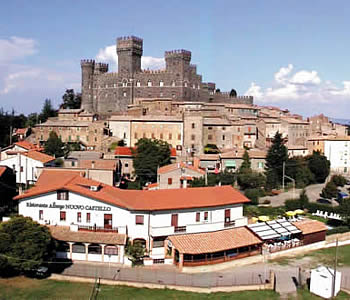 In this way, the largely undisciplined troops sacked Acquapendente
In this way, the largely undisciplined troops sacked Acquapendente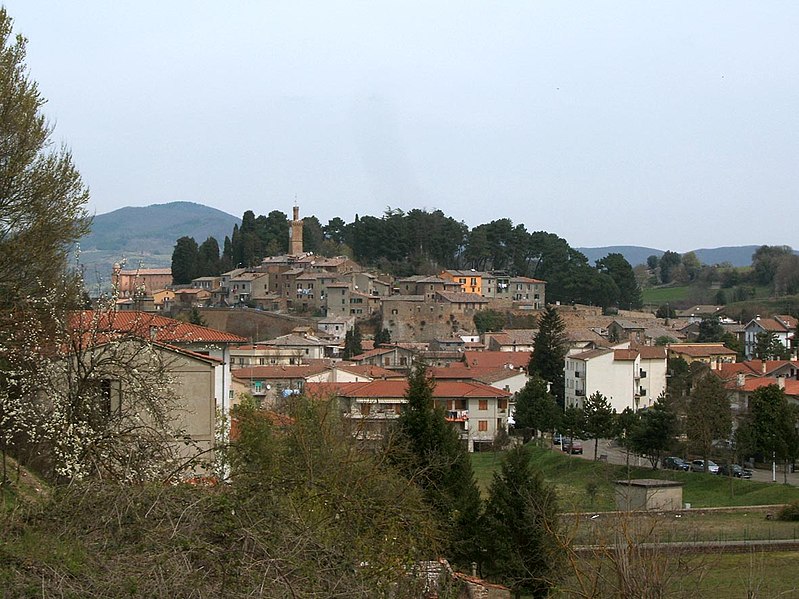 and San Lorenzo alle Grotte,
and San Lorenzo alle Grotte,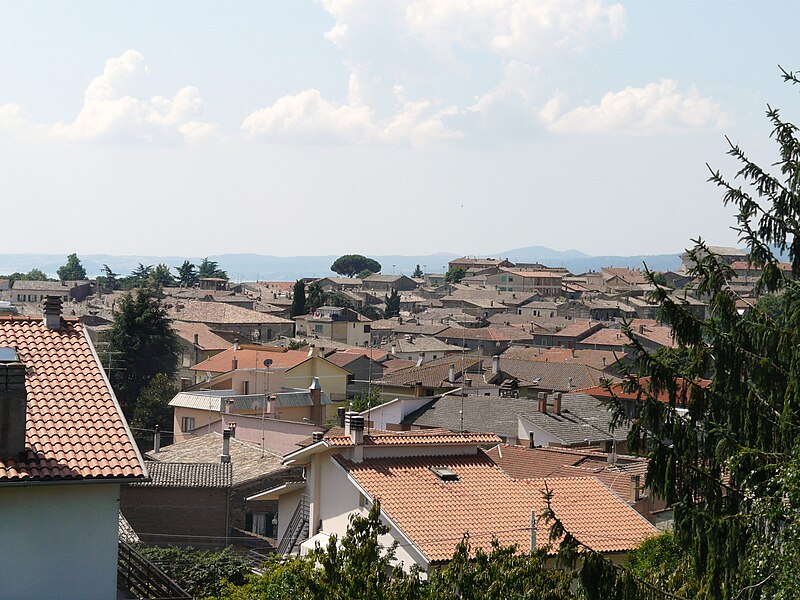 and occupied Viterbo and Ronciglione
and occupied Viterbo and Ronciglione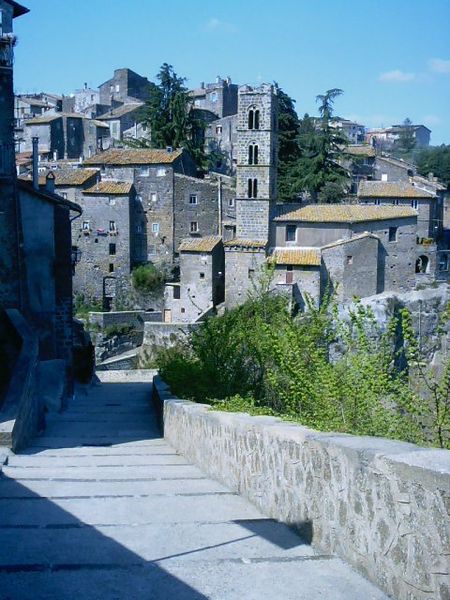 , reaching the walls of Rome on May 5.
, reaching the walls of Rome on May 5.
 In this way, the largely undisciplined troops sacked Acquapendente
In this way, the largely undisciplined troops sacked Acquapendente and San Lorenzo alle Grotte,
and San Lorenzo alle Grotte, and occupied Viterbo and Ronciglione
and occupied Viterbo and Ronciglione , reaching the walls of Rome on May 5.
, reaching the walls of Rome on May 5.Y!~~60_12.JPG)
No comments:
Post a Comment